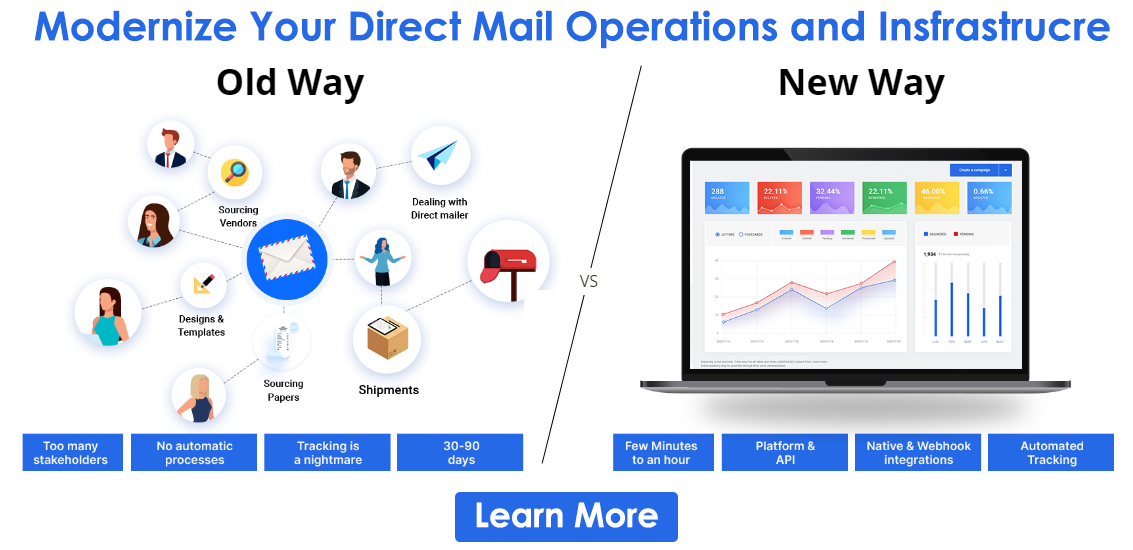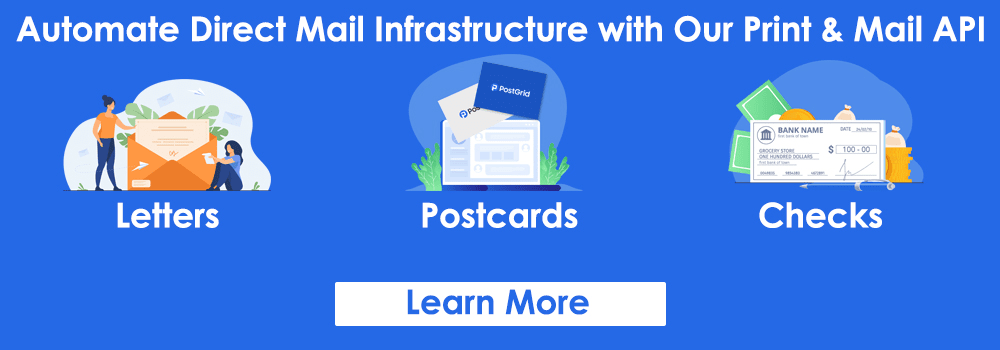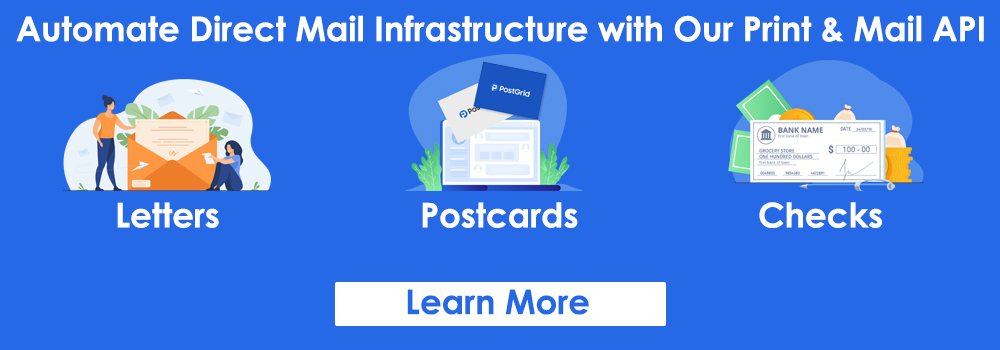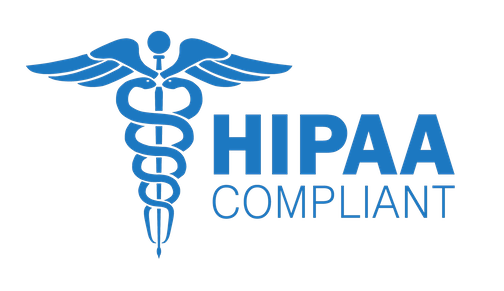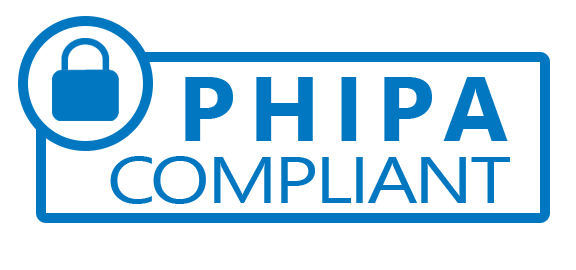
How to Build an Effective Patient Communication in Canada?
Every physician needs to maintain a healthy communication flow with their patients. It improves the mutual understanding and health outcomes of different treatment plans. Patients also have high expectations from their provider after the consumerisation of the healthcare sector.

They want to understand and acknowledge what their doctor explains about their healthcare. A survey by Sermo suggests that only 42% of physicians engage in active listening and open-ended questions.
The problems are even more significant when you consider the diversity of Canada. A diverse population means different language barriers for providers to overcome. Effective communication in healthcare helps decision-making and ensures mutual understanding.
Effective communication with elderly patients is another concern in many healthcare settings. They are a more delicate target group with unique needs. People often express complaints about their physicians not supporting them.
Any dissatisfaction with communication in diagnosis, test results, and management can harm the reputation of a healthcare facility. You must maintain patient satisfaction in the age of consumerism.
Communication skills must be a mandatory physician competency in any practice. However, most healthcare professionals need to follow the RESPECT communication model.
This model provides insights on ensuring an effective and patient-centric approach while communicating. Literacy of patients, excess workload, limited time, and bias are also behind inefficient patient communication.
This blog will help you build a clear strategy for effective patient communication. We also explore the Canadian healthcare industry, challenges, and communication mediums for engaging patients better.
What is Effective Patient Communication?
Every year, hundreds of people lose their lives because of clinical mistakes in healthcare facilities. Patient-centric communication keeps the patient’s needs the top priority in every interaction.
Effective patient communication is the best strategy to reduce errors and enhance the healthcare experience. Providers can interact with greater comfort while considering their needs and preferences.
Effective communication in healthcare requires open-ended questions to prioritize patients in every conversation. You must know that a healthcare environment is fast-paced and highly sensitive.
Patients don’t have a clear idea about the outcome of situations. This uncertainty builds anxiety and fear. Poor communication between doctor and patient can further escalate the situation.
Actively listening to patients makes them feel heard, and they have little control over the situation. They don’t want to develop mental issues over their health complications. Open conversations allow them to express their feelings about their condition and surroundings.
It helps in reducing fear and anxiety in a medical setting. Healthcare providers can provide more information to ensure faster and more accurate diagnoses.
People are often scared of visiting any healthcare facility. Lack of information and stereotypes can unnecessarily stress them. Effective communication between healthcare professionals and patients can eliminate this problem.
Canadian Healthcare Industry Overview
Canada follows a publicly funded healthcare system with world-class facilities from private entities. The government implements a standard of care with federal standards.
Healthcare spending also increases yearly and stands at around 11% of GDP. There is a greater need to understand healthcare requirements with the growing population.
For long-term sustainability, a progressive, patient-centric healthcare system needs transformational change and effective patient communication. We must rely on properly deploying Information Technology (IT) services to see this growth.
Canada also has a national health insurance program, Medicare. This government initiative, which started in the 1960s, ensures that all residents can access prepaid hospital and physician services.
The public sector pays the physicians on a fee-for-service basis. Healthcare facilities are not-for-profit firms with independent boards of directors.
However, public funding plays a vital role in their working capital. Effective patient communication is still critical despite the government’s involvement.
Why Do You Need Effective Communication Between Healthcare Professionals and Patients?
Healthy communication is vital in healthcare settings. Professionals and patients are heavily dependent on the proper exchange of information. It is necessary for the following reasons;
You Get Better Healthcare Outcomes
Lack of communication and information reduces the effectiveness of a treatment plan. Open communication in healthcare can improve the overall outcomes. Providers have the correct information about their condition and treatment plans.
At the same time, patients also get more details about their healthcare needs. An excellent treatment can boost psychological, physical, and emotional health. You can expect a faster recovery and a better quality of life among patients with effective communication.
Boosts Patient Satisfaction
Patients expect their providers to listen to their doubts and concerns about the healthcare journey. Providers can genuinely care about their patients and take proactive measures to reduce stress and anxiety.
Patients also feel higher satisfaction with diagnosis and recommended treatment plans if the provider makes an effort in interactions. It would help if you also understood your patient’s concerns to ensure higher satisfaction.
Improves Doctor-Patient Relationship
Healthcare businesses are heavily dependent on trust and credibility. People only visit a facility with a good reputation. They will only pay attention to your providers if you build strong relationships.
Effective patient communication lets you build ongoing relationships and showcase professionalism. Poor interactions make people mistrust or doubt your physician’s decisions.
They could also leave your organization for a competitor providing the same services. Communication training is a necessary aspect of every healthcare organization. It ensures physicians know how to interact and engage patients without turning them down.
Reduces the Chances of Medicare Negligence
Negligence and unethical practices can lead to medical malpractice. These activities can seriously damage the healthcare outcomes for a patient. Many of these instances are a direct result of poor communication and misunderstandings.
People often complain about doctors, raise conflicts, and even file lawsuits. Avoid such complications with efficient communication between healthcare professionals and patients.
Your organization can listen to the individual needs of each patient to provide accurate diagnosis and treatment. Expertise strongly criticizes negligence in healthcare decisions. It puts people’s lives at risk and damages reputations.
Types of Communication in Healthcare
The evolving technology standards are continuously shaping the way we communicate with patients. Providers are using diverse methods to meet the changing patient expectations. Only this approach can help you stay ahead of the curve in today’s healthcare landscape in Canada.
Here are different approaches you can use to ensure effective patient communication;
Patient Portal with Patient-Provider Communication
Many facilities have proprietary patient portals to help patients confidentially access their individual healthcare information. It is a great idea to tie patients to their healthcare journey.
The educational content on these portals engages patients to understand their specific health needs. Providers also include clinical summaries to explain appointments and test results better. A summary can add follow-up appointments.
Emails to Improve Relationships with Patients
Email campaigns are powerful among marketers from every industry. Healthcare providers can also use email as a reliable communication tool to save time. It is a faster method to reach patients than using phone calls.
Effective patient communication with emails requires reliable email campaign management software. Your patients can quickly answer questions from your emails. Many providers also use it for sending appointment reminders to patients.
Emails are great for sending medication requests instead of using long phone calls. The information is right there in textual form for easy saving.
Texting Can Quickly Spread Information
Text messaging is a brilliant tool for instantly reaching patients with vital information. Effective patient communication is often dependent upon timely data. Texting can directly communicate appointments, reminders, and patient-portal messages.
Patient portal security is a significant concern for many providers. Any breach of confidentiality could be a direct threat to a healthcare organization. Security measures are vital to ensure adherence to PIPEDA compliances in Canada.
Texting can help implement a two-factor login authentication mechanism. You can secure your patient’s information by eliminating the chances of unauthorized access. Texting service is handy for both security measures and effective patient communication.
Social Media Can Interact with a Large Audience
Previously, reaching a large target audience was only accessible with a significant investment. Social media allows us to get a greater audience with less effort and expenditure.
It could be an excellent tool for conducting surveys and reputation management for your healthcare facility. Social media platforms are also ideal for promoting your healthcare special events.
For example, a free health checkup can attract a large crowd from social media platforms. Communication in healthcare is gaining new direction with this approach.
It is a remarkable tool for spreading awareness during health crisis. Facebook, Twitter, and Instagram were critical in providing correct facts and guidance during the COVID-19 pandemic. They prevent the spread of misinformation and panic among people.
Effective patient communication is only complete if you include social media in your operations.
Direct Mail Creates a Sense of Urgency
People often argue that direct mail is dying in the age of digital technologies. However, it could be the most powerful way to communicate effectively with elderly patients.
These people still need to familiarize themselves with digital communication methods. They are familiar with the good old-fashioned direct mail reaching their mailboxes. It is a highly effective way of getting your patients with relevant information.
Many practices use direct mail to send patient information documents, appointment reminders, medical test reports, invoices, etc. The physical characteristic of these mailers increases their sense of urgency and appeal.
The high deliverability and response rate are testaments of physical mail’s success. Effective patient communication becomes easier when directly reaching households with relevant information.
However, traditional methods of sending direct mailers are becoming obsolete. It would help if you had modern automation tools to make tracking, customization, and synchronization features available.
An advanced direct mail platform lets you integrate direct mail capabilities with existing software systems. It ensures the best patient communication strategy for your healthcare firm. Personalization of mailers takes the healthcare journey to the next level.
Use a direct mail platform to build trust and reputation for your medical organization.
Apps and Websites Can Target Different Demographics
Providers often rely on different apps to engage and target diverse groups of people. Healthcare websites are there to provide educational information to people looking for more clarity. It ensures a decrease in the gaps in effective patient communication.
Patients are curious to learn how a treatment plan or medication works. Providers must fulfill this curiosity with relevant and accurate information. Telehealth apps are popular among people because of gamification and interactive features.
These apps often engage them in activities such as exercising or monitoring their blood sugar. Wearable devices are the latest innovation in effective patient communication. Users can check different vital health metrics with these devices.
Importance of Patient Satisfaction
A facility’s ability to remain open and provide medical services can improve patient experience. The healthcare industry is also very competitive in Canada. People seek the best healthcare journey with an informed and optimized treatment plan.
They don’t prefer to live in oblivion without information and involvement. Active participation in their treatment journey can ensure better retention. Surveys and feedback are integral components of effective patient communication.
You can enhance the experience if you are willing to make a difference. Expert providers take patients as customers to personalize services and meet their expectations. It is similar to how a restaurant or retail business treats its patrons.
You must focus on customer experience to increase your revenue and repeat business. Are you wondering about the factors leading to a poor patient experience? We bet you are!
- A need for effective patient communication in the provider-patient relationship.
- Patients hate long waiting times to obtain necessary information or guidance.
- There needs to be a proper explanation of the diagnosis or test results.
- The provider focuses on treating more patients instead of building rapport.
It can multiply the adverse effects of ignoring these factors for a long time. A loss of market share is evident if you don’t focus.
Benefits of Patient Satisfaction
Improvement in satisfaction with effective patient communication can have various impacts;
Higher Patient Satisfaction Leads to Staff Satisfaction
Happy customers create a positive working environment the staff enjoys. Your organization can have a higher morale and less turnover with satisfied customers. It also ensures the domino effect of improving patient satisfaction within your medical setting.
Patient Satisfaction Contributes to Financial Growth
Satisfied customers will likely remain loyal to your organization and support revenue growth. They won’t be looking for other alternatives when you don’t ensure effective patient communication.
Customer Satisfaction and Hospital Profitability Have Deep Connections
Providers can install patient satisfaction scores from fair to good to very good. It helps in maintaining a steady flow of revenue to their healthcare business.
Fundamentals of Effective Patient Communication
Expert healthcare professionals use the acronym AIDET while discussing the fundamentals of effective patient communication. It provides in-depth clarity on what to use in your communication strategy.
We can expand AIDET into the following points;
Acknowledgment
The first step is to acknowledge the patient and their family. You can start maintaining eye contact, smile, and address the patient by name. It would help you gain their complete attention.
A practitioner must also dedicate sufficient time to each patient to acknowledge them. Effective patient communication starts with a positive environment and tone.
Introduction
How would you like to introduce yourself to the patients? Start with your name, specialization, and role. You must also mention your title, qualifications, and experience in a specific domain.
For example, tell patients that you are a chiropractor if you have expertise in treating musculoskeletal issues. Communication in healthcare is highly dependent on credibility factors.
It helps to showcase that you acknowledge your involvement in the patient’s healthcare journey. They will also start to recognize your skills, experience, and competence.
Duration
Estimating the time necessary for a patient’s consultation or medical procedure is vital. People hate to wait for long queues and consultations. Inform them of the exact time it will take things to happen.
For example, a patient would like to know about the waiting period for a specific treatment. The knowledge of the duration gives a sense of control and helps reduce their anxiety and expectations.
Explanation
A specific diagnosis or treatment could have multiple steps. Patients often find these steps highly complicated and lengthy. Providers often explain the step-by-step process to ensure effective patient communication.
You must use plain language while explaining different test results, procedures, and medications to the patient and their family. Communication in healthcare starts by allowing patients to ask questions regarding their healthcare journey.
People hardly know anything. We mustn’t assume that they will learn on their own. Great healthcare experiences start when the patients are knowledgeable.
Thank You
The step to the fundamentals of effective patient communication is expressing gratitude. Healthcare providers must thank patients and their families for choosing the medical facility and for their patience.
Expressing gratitude is necessary for building a long-term relationship and positive patient experience. It would help if you had good connections with patients to continue growing your healthcare business.
Why Do You Need Strong Communication in Healthcare?
Patient satisfaction must be the top priority of every Canadian healthcare organization. With this, you can expect fruitful healthcare outcomes. Here’s what could go wrong if you don’t ensure effective patient communication;
Irregular Follow-Ups
We understand that healthcare professionals have busy schedules. They can dedicate up to the necessary time to each patient. However, things could be better if you consider sending follow-ups.
Regular follow-ups are vital to ensure there are no treatment delays. This ongoing dialogue provides effective communication between healthcare professionals and patients. People might even leave your organization in favor of another competitor.
Poor Patient Experiences
Inefficient communication between patients and healthcare professionals gives birth to poor healthcare experiences. Providers must adopt a proper system that enables patients to express their concerns openly.
They can trust you if they can communicate medical issues without hesitation. High-quality medical care is critical to boost patient experiences. You can ensure repeat business if you treat them well in the first place.
Incorrect Diagnoses and Prescriptions
These decisions could have a life-altering effect on patients. Only a few doctors understand entirely the patient’s medical history. Effective patient communication eliminates the interaction gaps.
Doctors may prescribe incorrect diagnoses and medications without documentation. It can create severe consequences for patients’ lives.
Incorrect Recommendations
Any medical setting must securely share sensitive patient medical records. It ensures outstanding health outcomes and patient care. Accurately capturing the latest data is also necessary to avoid discrepancies.
Poor data sharing can result in wrong recommendations and a compromise in healthcare. Many providers ignore this and incorrectly recommend treatments or medications.
Declining Reputation for Care Providers
Many providers need to pay more attention to the importance of effective patient communication and avoid losing their reputation in the market. Trust is a foundational stone in the healthcare industry. Would you let an inexperienced physician treat your appendix?
Unclear and inaccurate information from providers can make people lose faith in the medical institution. They might even neglect their treatment plan and look for other options. Long-term negligence in communication in healthcare can permanently damage your reputation.
Lower Patient Lifetime Value
Do you want your patients to be loyal to your healthcare brand? What efforts are you taking to ensure smooth and effective patient communication? A good patient’s lifetime value depends on future revenues and profits you will likely generate for your organization.
Patients will only turn up to your facility in the future if they have faith in your practice. Effective patient communication is vital to building trustworthiness.
Best Methods to Improve Effective Communication Between Healthcare Professionals and Patients
Now, you must understand the impact of communication in healthcare. It can positively mold the patient experience and ensure better healthcare outcomes. You must implement proper training sessions and follow these tips;
Be Attentive
Many providers ignore the patients and hurry to complete sessions. It is a bad practice in any healthcare setting. You must pay attention if you want to know your patients well.
It is the first step to building strong trust and rapport. You also have meaningful discussions about the treatment by providing complete attention. Effective patient communication heavily relies on this practice among providers.
Summarize Communication
People often need to remember the essential bits of their consultation sessions. An expert provider will summarize their sessions by noting the key points from each session. It provides better clarity to the patients about their healthcare status.
Communication in healthcare requires professionals to create explanatory notes for easy understanding. Ultimately, people will only look at the most vital information from their healthcare journey.
Show Curiosity
You must show curiosity to build genuine connections with your patients. Ask yourself, what’s going on with this person? What are the complications in their lives? It will give you more insights into their healthcare information.
Patients can also expect a better experience when the provider is curious about them.
Use the Appropriate Tone
Your audience will need help understanding the complex medical terms. Simple and concise language is more effective when explaining health complications. ‘Talking down’ to the patient is always wrong in any healthcare setting.
Non-verbal interactions also play a significant role in effective patient communication. It demonstrates a sense of warmth and empathy, which helps the patients to open up. They expect polite and patient behavior from their healthcare providers.
Ask Open-Ended Questions
People often want to discuss their concerns with healthcare professionals. However, a trigger is necessary to discuss what’s on the top of their mind. Patients can relax and be more attentive to other topics you must examine in the session.
Providers can freely discuss their questions to gather medical information from patients during an interview. Here are some examples of open-ended questions;
- How were you feeling in the past week?
- Tell me about when you started smoking.
- Tell me about the challenges you face while taking your medication.
Involve Friends and Family
Sometimes, a patient could be facing a life-threatening condition. It could inflict tremendous stress regardless of your cooperation and effective communication. Expert providers include patients’ peers in such situations.
People tend to have more stress when they are alone. They can also find it hard to remember every interaction from consultations. Friends or family can better reflect on the issues and explore more options.
Providers encourage patients to bring their relatives while handling a challenging consultation. It relieves them from anxiety and helps them learn about diagnosis and treatment options.
Learn About Your Patient’s Situation
Everyone has different lifestyles, preferences, and choices. You must understand what’s going on in their life during consultations. It would help you optimize your diagnosis and treatment options for later stages.
A holistic assessment affects how you manage your healthcare journey. Effective patient communication starts with in-depth understanding.
Consider Help From Your Colleagues
A second opinion is always helpful in overcoming communication barriers. Many providers use a multidisciplinary approach to improve the healthcare outcome.
For example, nurses could do a fantastic job educating patients after the primary consultation. Patients could get answers to their questions about health conditions. It’s always amazing to have someone else to talk to.
Communicate in Multiple Ways
Verbal communication might be the most vital tool for effective patient communication. However, that’s not the end of the story. Many individuals will prefer different approaches to getting healthcare consultation or information.
Some might like emails, while others prefer direct mail. Telehealth applications have also been gaining popularity in recent years. They provide remote, one-to-one, effective communication between healthcare professionals and patients.
Consider Shared Decision-Making
Patients don’t want to live in the oblivion of no knowledge. They need accurate information about their healthcare journey. A shared decision-making process encourages people to stay aligned with the treatment plan.
Healthcare outcomes are also better when patients actively participate in their treatment plans. Effective patient communication requires considering the patient’s opinions.
Be Aware of Bias
Every physician can have some bias while providing healthcare consultancy. Acknowledge these biases and ensure proper steps to minimize them. These biases can significantly impact how we care and communicate with patients.
Successful providers always acknowledge their biases before starting any consultation session. Patients can comfortably share personal and possibly embarrassing issues when you eliminate your biases.
Effective patient communication only works without personal biases in a healthcare setting.
Ensure Active Listening
Providers actively listen to their patients to tailor their recommendations for the treatment plan. The more detail you have, the better your advice becomes. Active listening also ensures effective communication between nurse and patient.
You can also reduce patient’s stress and anxiety by listening to their concerns and conditions.
Watch Your Back
Do you know how you sound as a doctor? Record some videos while consulting patients. It would help you gain the perspective of their healthcare experience. However, remember to get their consent before recording anything.
You will gain vital insights on improving your consultation and recommendations.
Speak Out Loud
Effective collaboration is necessary in healthcare to provide patients with the best solutions. Be ready to share ideas and listen to your team members. You could be a veteran physician. However, sharing thoughts and collaboration improves healthcare outcomes.
Communication in healthcare also needs a “freedom to speak out” model. Everyone in your team should have some authority to share thoughts and ideas.
Maintain Records
Can you remember every interaction from your consultations? Documentation of patient exchanges helps share information with others in the healthcare journey. Patients will only need to explain their condition to some.
You can also retract information from your records for further investigation. EHR systems are highly accurate in keeping data secure for every patient. Communication in healthcare requires reliable measures for documentation.
Provide Notes to Your Patients
Start sending letters to patients after every consultation. It provides a better overview of the healthcare experience. Many providers also experiment with sending audio or video footage of the consultations.
Patients can rewatch them to understand the critical points of their diagnosis and treatment plans. Clinicians can also amp up their standards while in front of a camera.
How Do You Deal with Time Constraints to Ensure Effective Patient Communication?
Time constraints are a common concern for physicians and patients. A waiting period negatively impacts patient satisfaction. Patients can develop different perceptions depending on the time spent with the physician.
You need proper techniques to improve patient satisfaction, even if the consultancy duration is short. Many patients have time constraints for office visits. Providers set clear expectations early on to avoid confusion during these visits.
Be upfront and acknowledge the value of time. Every patient must get appropriate time and attention while receiving healthcare solutions from your end.
You can use scheduling software and direct mail automation tools to inform patients about their upcoming appointments. Healthy communication in healthcare requires prior attention and planning.
Hasty decisions can badly impact your healthcare organization and its processes. People can only face better healthcare experiences if providers focus on planning and execution.
Barriers to Effective Patient Communication in Healthcare
Communication is the foundational stone of healthy relations between providers and patients. However, it is often problematic for providers to overcome interaction barriers. Here are some common hurdles;
Mismanagement of Healthcare Files
Healthcare data is continuously evolving with greater complexity. Doctors, nurses, administrators, and other professionals often have difficulty managing these patient files.
It opens the gates to miscommunication that can impact treatment. You must also comply with PIPEDA standards to ensure healthcare information remains confidential and accessible to authorized individuals.
Software solutions must have PIPEDA certification to give you this assurance. It provides accurate communication in healthcare while limiting misunderstandings. Healthcare providers often control how they can access critical patient data.
Mismanagement of this information can impact your communication in healthcare solutions.
Patient Distrust and Discomfort
Patients often feel discomfort while sharing their sensitive information with providers. For example, it could be challenging to discuss sexual dysfunction or substance misuse. There are different reasons for this hesitant to share information;
- Intimidation from the provider.
- They think their physician won’t listen to their concerns.
- They doubt medical guidance in general.
- They are struggling with some physical or psychological trauma.
- They feel disrespected by the requests to disclose information.
Language Barriers
Canada is a diverse country with various ethnic groups. Many individuals are not native English speakers, while some don’t even know the language. They can face severe challenges while communicating their needs or symptoms.
Culturally competent care is vital to bridge communication gaps between providers and patients. You must arrange adequate measures to understand your patients and their concerns. Never delay delivering perfect support to different communities by acknowledging language barriers.
Many providers arrange exceptional translators to help patients communicate their health needs. It gradually increases patient satisfaction and healthcare outcomes.
Physical or Biological Problems
Many patients suffer from these conditions that impact their ability to interact with providers effectively. For example, some individuals face visual, hearing, speech, or physical disabilities.
It is very challenging for providers to ensure effective patient communication with these individuals. They often use alternative methods, such as assistive devices, braille, and sign language for interactions.
We must uphold the needs of these patients. Only efficient measures can bring justice to their healthcare requirements.
How Do You Use Direct Mail for Effective Communication in Healthcare?
Direct mail is highly effective for communication in healthcare interactions. Even in the digital age, you can significantly impact your patients with physical mailers. Many healthcare organizations use direct mail marketing to send:
- Medical history records
- Patient billing statements
- Invoices
- Medical test records
- Patient instruction forms
- Account information
- And more!
Why Consider Direct Mail?
Showcase Your Expertise
Medical firms desire to build substantial credibility in the market. Direct mail provides the perfect medium to send educational content to help patients understand their healthcare journey.
A direct mail newsletter is the best place to start your campaign of building trust. Customize this information depending on your target audience and ensure effective patient communication.
Some use direct mail to send mailers to a specialized group. However, providers must avoid using too much jargon in their educational material. The primary goal should be nurturing healthy patient relationships with knowledge and empathy.
It can position your brand as a leader in the healthcare landscape. Effective patient communication is also possible when you use the right collaterals.
Make Appointments
Thousands of doctors and clinics use direct mail to send appointment reminders to patients. Email communication is fast. However, people hate the massive influx of information from their inboxes.
Physical mail directly penetrates mailboxes, and people always read them. The tactile characteristic creates a sense of urgency about the information.
Calm their Fears and Doubts
People face fear while setting foot at a doctor’s office or hospital. Effective patient communication requires providers to calm these doubts.
Direct mail can show professionalism while sharing vital information about visits, diagnosis, and treatment. It is a reliable tool to confirm facts and spread awareness about medical conditions. Next time, patients can have peace of mind while visiting your facility.
Assist Patients to Discover You
Direct mail is a powerful tool to ensure effective communication with elderly patients. Healthcare settings are all about the physical location.
Older people are less likely to use web searches to find your facility’s address. How can you cost-effectively provide your address? You can direct mail with the proper address, operating hours, and services.
Some providers also include a personalized map showing the location and driving directions from the patient’s home. Providers must use variable data printing (VDP) to personalize the mailer.
Provide Options to Patients
Only some prefer digital communication mediums to receive information from your healthcare firm. Add direct mail to provide an additional option for effective patient communication.
It is more direct, personalized, and effective for sending vital information. You can do much more when personalizing your mailers with relevant details.
Why Should You Consider PostGrid Direct Mail API for Effective Patient Communication?
PostGrid print and mail API could be the ideal solution for all your problems. It is a fully compliant direct mail solution that lets you send patient communication securely and confidentially. The automation features can save hundreds of hours and eliminate the scope of human errors. Integrate our API with your existing software solution to do the magic. This direct mail API automates all your patient communication with predefined triggers.
Traditional direct mail is dying in the age of hyper-personalization and data analytics. It would help if you had a more customizable, trackable, and compliant solution to ensure effective patient communication. Thus, using an effective tool with advanced features is crucial!
Are you ready to ensure effective communication between healthcare professionals and patients? Sign up now!


